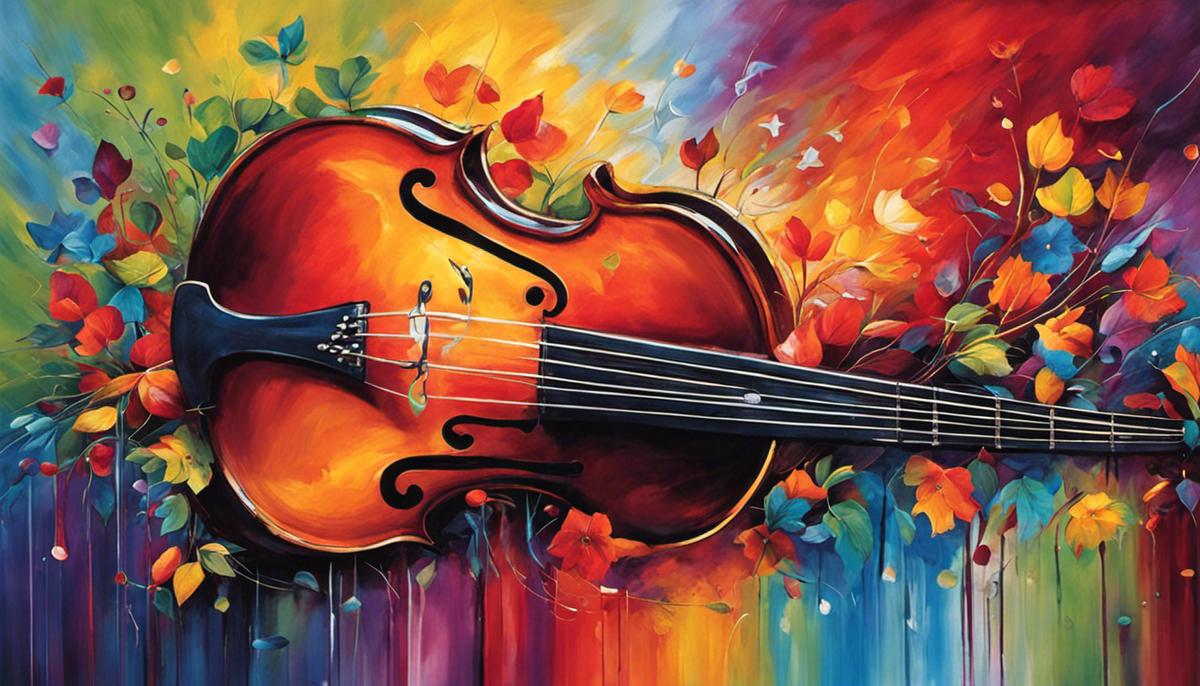Mastering the world of vocal recording can be an exhilarating journey, fraught with challenges as we tackle intricacies like sibilance and plosives. As hobbyists and aspiring professionals, refining our understanding of these elements is not merely an exploration, but a necessity. Issues of sibilance, the hissing ‘s’ in our recordings, or plosives, the undesirable ‘pops’ in our audio tracks, often prove to be a bane to vocal recording quality. Why do they occur, and more vitally, how do we manage them? Coupled closely with the art of microphone technique and positioning, these elements of sound may be tamed and modulated to perfection. It’s time to dive deep into understanding the origin, impact, and control of sibilance and plosives in our vocal recordings.
Understanding Sibilance and Plosives
Music – a mighty river that transcends time, evokes emotions, links cultures, and ignites souls. It’s an existence that is infinite, continuously transforming into divergent forms while maintaining its prime essence. To truly experience music, one must not just listen, but understand its different parts, sounds, and techniques.
Today, we dive deep into the heart of vocal recording to explore two pivotal elements that contribute significantly to quality music production: sibilance and plosives.
Sibilance is a unique linguistic phenomenon that reverberates in music creation and recording. When a vocalist sings or speaks, there are certain tongue and teeth engagements that result in what we call “hissing” sounds. These occur mostly with consonants such as “s” and “z.” This “hiss” can be pleasing on the ear when at the right level, adding an appealing smoothness to the vocal melody. However, when it’s too excessive, it can create a harsh or piercing sonic experience.
Controlling sibilance requires a level of finesse. The artist’s vocal technique plays a crucial part, as an adept vocalist can masterfully modulate these sounds, resulting in a perfect balance. On the technical side, sound engineers employ de-essers – an extraordinary piece of compression technology – that reduces or diminishes the sibilant “hiss” while keeping the integrity of the vocals.
On the other side of the spectrum, we have plosives – those percussive blasts that sometimes thump in your earpiece when someone says words with the letters “b,” “p,” and “t.” They are the explosive sounds resultant from the release of a blocked airstream in the vocal tract. In the language of music, plosives equate to mini sonic booms that can add potency to a song or become a vexation if unchecked.
To guard against the disturbances created by plosives, both vocalists and sound engineers possess an arsenal of techniques. For singers, it’s about mastering enunciation and controlling their delivery. For sound engineers, there are various pieces of equipment that can help. The Pop Filter, for example, when placed strategically in front of a microphone, can dramatically reduce the power of plosives.
Understanding the intricacies of sibilance and plosives is an odyssey into the world of music that reveals that sonic brilliance lies not just in melodies but in the minutiae. Whether it is the fleeting hiss in a jazz crooner’s serenade or the thump in a rapper’s fiery verse, appreciating these components enriches our music experience and deepens our affection for this extraordinary form of art. After all, when it comes to music, it’s all in the details. Each breath, each utterance, every tiny instance of sound is a note in the grand symphony of expression that we call music.
So next time you find yourself immersed in a harmonious symphony or an powerful rap verse, take a moment to listen – really listen – to those hisses and explosions briimming in the undercurrent. In those depths, you’ll discover yet another embellishment on the complex mural of music. How terrific it is that no two songs, or even two notes, are ever truly the same! Through this understanding, our journey into music’s soul becomes even more profound, surrendering unto its beat our unabating love and reverence.

Vocal Techniques to Manage Sibilance and Plosives
On the vast and mystifying canvas of music, the palette holds many spectacular shades that when combined, create a masterpiece of rhythm and sound. There is an incredible depth to the ocean of music, filled with fascinating elements waiting to be discovered, interpreted, and most importantly, expressed. Among these elements lay the often overlooked yet crucial details of sibilance and plosives, which can impact the beauty of the composition.
A major part of appreciating and understanding music comes from the deconstruction and scrutiny of its components. It’s acknowledging the power of the smallest details, where sibilance and plosives cradle and cool the flowing current of melody. The true palette of a maestro lies not just in the keys, chords, harmonies, or rhythms, but also in the intricate minuteness of syllables – the ‘s’ sounds and ‘p’ sounds that can shape and mould the rhythmic experience for the listeners.
Having sufficiently conversed about the meaning of sibilance and plosives, let’s stir the musical cauldron a little more and delve deeper into the arena of vocal techniques that can help manage these elements.
A popular and highly effective approach lies in vocal positioning. Sibilance can be controlled by slightly altering the position of the tongue and teeth, adjusting the way a vocalist forms ‘s’ or ‘sh’ sounds. Manipulating these subtle aspects can help reduce excessive hissing and give your vocals a smoother edge.
Similarly, plosives can be effectively managed by reducing airflow during pronunciation, consciously focusing on the way ‘p’ or ‘b’ sounds are articulated. Vocalists can also control plosives by using techniques like aspirated singing, where the consonants are pronounced with a significant release of air to prevent the characteristic popping sound.
It’s not merely vocal techniques that can help manage sibilance and plosives. Microphone technique is also paramount in producing a balanced and controlled vocal recording. Singers and sound engineers should consider microphone positioning, the type of microphone, and even the specific angle at which it is addressed to prevent the extremes of sibilance and plosives.
At times, physical tools like screens and shields are employed in the battle against plosives. These act to disperse the force of the vocal gusts, whereas high pass filtering can assist in reducing the impact of low-frequency plosives in the recording.
Despite the technicality sunk deep in these elements and techniques, it’s crucial to remember music’s inherent nature – it’s a form of expression that constantly evolves and changes. The endless swirl of sibilance and plosives, their application, and control is a dance that musicians learn and relearn as part of their career. Despite the changing trends and transformations in music, these fundamentals stay relevant and vital, amplifying the authenticity of the art form.
The grandeur of music relies deeply on these intricate and nuanced details. The management of sibilance and plosives is a testament to the same. Their control can enhance the beauty of the musical number, making it more pleasant, enjoyable and expressing the intended depth and emotion. Hence, the mastery of these vocal techniques can truly make one a connoisseur, mastering the art of perfectly balanced musical compositions.

Post-Production Remedies for Sibilance and Plosives
Utilizing Post-Production Techniques to Soothe Sibilance and Pacify Plosives
Dancing in the realm of music production, the footfalls of sibilance and plosives are never too far away. These acoustic quirks lend character to compositions, yet unchecked, can swing towards discord rather than harmony. Kesha’s ‘Tik Tok’ wouldn’t be the same without its explosive opening ‘P’—but, conversely, unchecked sibilance might have left The Beatles’ ‘She Loves You’ sounding more like ‘She Lo-ves Yoouuu,’ to its detriment. To control these phantom performers, post-production techniques hold the key.
Proper Vocal Positioning: A Fastidious Tether to Sibilance
Vocals undoubtedly dictate the soul of a piece; in the same breath, they are the carriers of temperamental sibilance. A favoured post-production practice is to consciously usher the performer’s positioning relative to the microphone. Angling the microphone off-axis to the singer’s mouth can efficiently address sibilance, aligning the resonant chord of the voice with the microphone’s less sensitive axis. This empowers a nuanced capture of tonality while effectively reining in excessive sibilance.
Embracing Mic Techniques: Curbing the Plosive Culprit
Heavy-handed plosives, an unchecked force, can wreak creative havoc, leading to distorted low frequencies. Musicians, particularly singers, may grapple with the dominance of plosive sounds such as ‘b’, ‘p’ and ‘t’. Enter microphone techniques, the gentle dew that quells the rampant plosive flames. Artists may find it useful to subtly shift their direction when having to tackle plosives—moving slightly above or to the side of the microphone during these sounds. The result? A sound landscape where the vibrancy of music shines, out of the dark shadow of plosives.
Screening Shadows, Illuminating Sounds
Screens and shields play a crucial role – their placement between the mouth and microphone, an unassuming guardian in pacifying plosive interference. Screens scatter incoming energy, smoothing out those sharp plosive edges, while shields add an extra layer of protection to the microphone, further preserving the integrity of the sound. Don’t disregard these gatekeepers when wanting to embrace clarity in vocal recordings.
High-Pass Filtering: Compromising with Low-frequency Plosives
Leveraging the power of high-pass filtering in a post-production process is akin to holding an acoustic peace treaty with plosives. It’s possible to reduce the power of these low-frequency sounds, without robbing them of their inherent impact. High-pass filters allow higher frequencies to pass while effectively attenuating or minimizing lower frequencies – a moderating force for plosives, helping to strike a balance between impact and control.
A Winding Melodic Dance
Music flourishes in its evolution – a ceaseless danse macabre with flux as its eternal partner. Sibilance and plosives carry their roles in the choreography, influencing musical trends, styles and dealing with the demands of changing technology and listener tastes. There is joy in understanding dynamics, a real pleasure in tracing the undercurrents that inform rhythm and melody. Post-production techniques offer the means to master this dance across a wide spectrum of genres.
The Sounds of Expertise
Undulating under the euphony of great compositions is the mastery of techniques like controlling sibilance and plosive sounds. These, when left unchecked, can disrupt an otherwise enthralling experience. Artists who deploy the tools and techniques at their disposal demonstrate inspiring prowess and an understanding of the intricate puzzle that is music. So, the next time you’re lost within the kaleidoscopic whirl of a track, spare a thought for the subtlety of sibilance control and the pacifying efforts towards plosives – the unsung heroes that truly make music an enchanting adventure.

Perfection in the realm of vocal recording is not an easy quest, yet it’s one that yields immense satisfaction and professional clarity in our work. A keen understanding of troubles like sibilance and plosives, and the ways to navigate them, drastically enhances the quality of our vocal recordings. By exploring profound vocal techniques, mindful articulation, and positioning, we already pave the way for significantly cleaner, professional-grade sound. Additionally, complementing these techniques with post-production remedies such as de-essing and high-pass filters rounds out our toolkit to handle sibilance and plosives effectively. Armed with these tools and knowledge, you have everything you need to conquer the world of vocal recording, one well-articulated syllable at a time.

Comments.
Currently there are no comments related to this article. You have a special honor to be the first commenter. Thanks!